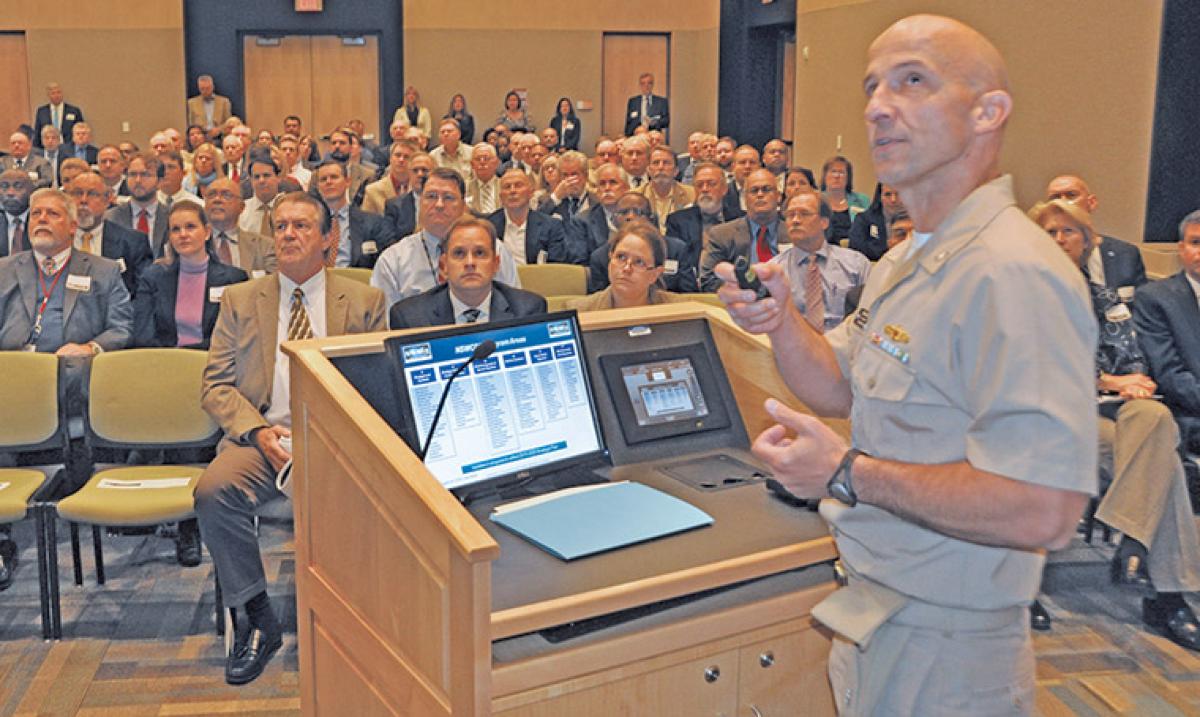When a fellow naval officer, a pilot, asked me the following question, I was stunned. “Surface warfare is a community without a mission,” he said. “What do you guys actually do?” He seemed so profoundly uninformed and the answer so obvious that I blurted out a string of catch phrases—power projection, sea control, mobility in the maritime domain. Then, realizing this meant nothing to him, I struggled to explain the surface Fleet in terms devoid of Navy jargon, even though I was speaking to someone who should have understood it with no problem.
The question highlights a significant problem that the Navy faces: our inability to articulate its purpose and importance to the American public. If an active-duty naval officer does not know what the Fleet is for, what must the average U.S. taxpayer and voter think? Amid increased naval competition and threatened Navy budgets, the implications of a populace unaware of our service’s function are dangerous.
To those of us who live in a naval world 24 hours a day, seven days a week, the surface Navy’s missions seem intuitive, but they are not. In fact, of all the services the Navy arguably has the most nuanced and complex role. Although it is a primary mission, the Navy does not exist solely to destroy rival navies; if it did, my aviator friend’s question would be valid. Why have such a powerful surface Fleet in the absence of an equivalent threat? Rather, the Navy fulfills multiple and complicated functions in U.S. foreign policy. The service can independently provide a threatening or comforting presence, strengthen alliances, permit the United States to “reach out and touch” other nations constructively or destructively, and enforce international norms, to name a few of its uses. The challenge lies in describing this in a manner that is accessible and convincing without losing the complexity of our mission.
In the late 19th century, advocates of U.S. naval power tried to convince an inward-looking citizenry, preoccupied with western expansion, that a navy was vital to American interests. That such a service could play a role in foreign policy beyond making war—that its mere presence was an asset—was a concept requiring clarification. Fortunately, proponents of naval modernization succeeded in spreading the message, and the United States emerged on the world stage as a naval power.
A similar dilemma faces our modern Navy. In the popular view today, the Navy is of minor use for counterinsurgency operations, occasionally launching Tomahawks over the horizon or air strikes from a carrier, or boarding suspicious vessels. Even these functions would probably be difficult for the average American to list. The public is simply not informed about our purpose. Movies and TV shows like Battleship and The Last Ship provide a glimpse into the naval world and show it in a favorable light—when facing alien attacks or global pandemics. The nation needs to be educated on why we need a powerful Fleet today, in the real world, to deal with real threats.
Maritime disputes in East and Southeast Asia offer a compelling argument. However, most Americans are unaware of the growing potential for major conflict in East Asia. U.S. media rarely report on heated Asian maritime disputes, arms races, and national rivalries. This is unfortunate, since the region could be a flashpoint for international crises in the coming years. Lack of coverage of such issues is also detrimental to the Navy, since it is problems like these that provide the circumstances best exemplifying the roles of and necessity for a strong Navy.
These U.S. shortcomings are not lost on China, with a navy whose capabilities in some areas already surpass ours. The People’s Liberation Army Navy enjoys popular attention and political support as well as healthy discussion about its purpose and future. We could use the same level of discourse. Before that can happen, though, we must give details to the public about why we are here and what purpose we serve. This must be done without service-specific jargon, but also without so oversimplifying the message that it loses all meaning. “A Global Force for Good” may be an effective recruiting slogan, but as a message to the citizenry it says nothing about what the Navy actually does.
Without the interest and support of the general population, U.S. naval power is unsustainable. While we await the appearance of the next generation of Alfred Thayer Mahans—knowledgeable, respected scholars who step forward and present the case for a Navy anew—we should at least ensure that we, as sailors, are aware of and able to articulate the reasons for which this country needs a strong maritime force. We should know our own Navy.



